19th Century FrenchSchool
Doe Trophy
Oil on Vachet panel
Monogrammed FG and datedlower right
41 x 32 cm
1831
This animal still life, signedwith the monogram FG and dated 1831, is part of the tradition of hunting scenesdeveloped since the 17th century, particularly in Flemish and French painting. Theartist depicts a doe trophy in a sober composition with dark, earthy tones. Therealism of the anatomy, the delicate treatment of the fur, and the subtle lightthat isolates the animal against an indistinct background suggest anaturalistic intention.
Dated 1831, the work bearswitness to a pivotal moment when Romantic painting opened up to subjects drawnfrom real nature, marking a shift towards direct observation and animalsensitivity. The monogram FG, still notdefinitively identified, could refer to a painter trained in the circle ofearly 19th-century French naturalists, precursors of artists such as GustaveCourbet (1819-1877)—who revisited a very similar composition at the end of hislife in 1876—or even Rosa Bonheur (1822-1899).
With its simplicity andfrontality, this small painting strikes with its expressive density,concentrated entirely in the animal's inert body. It ispart of an intimate vein of animal painting, far from the spectacular, butequally striking in its evocative power.


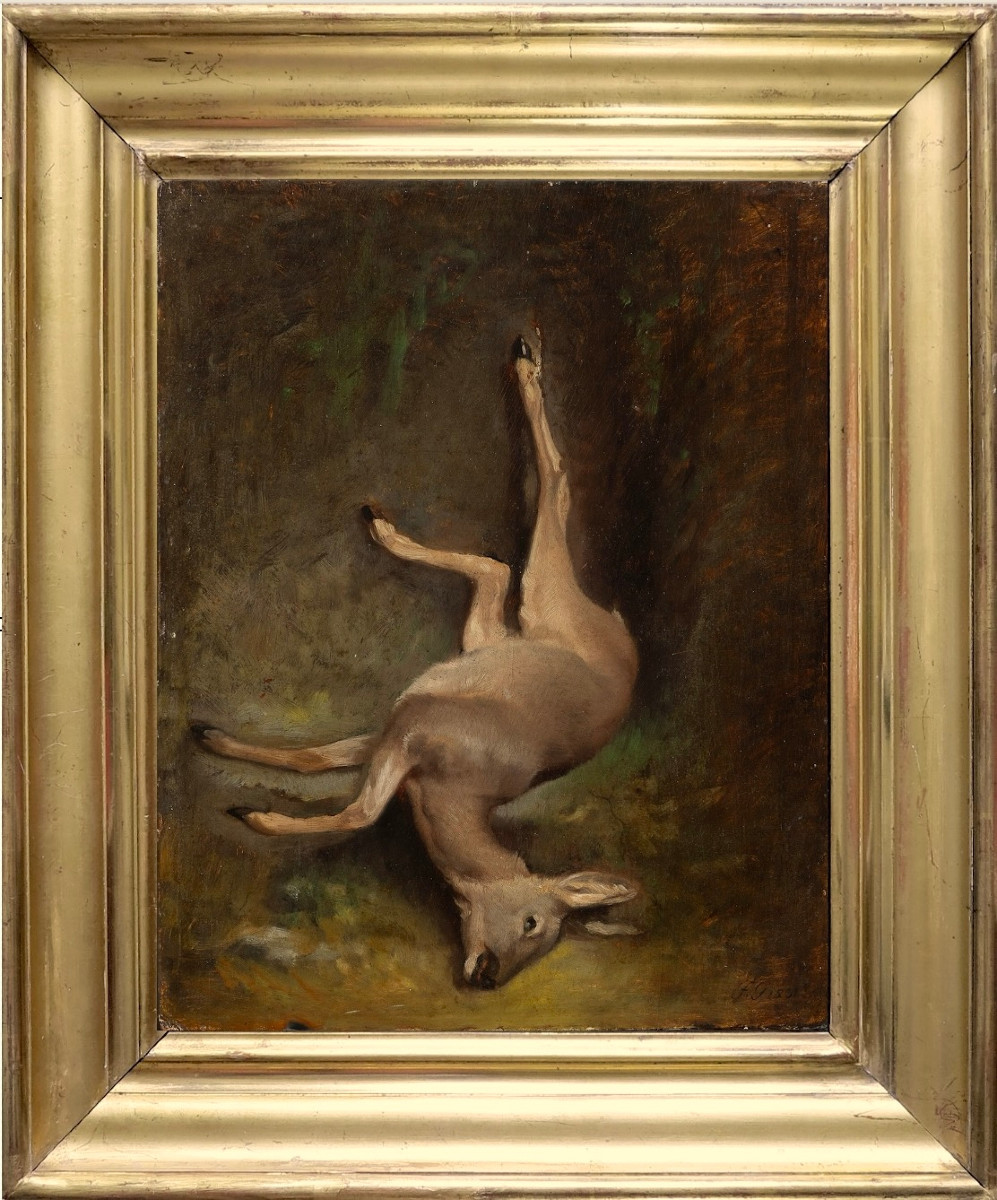

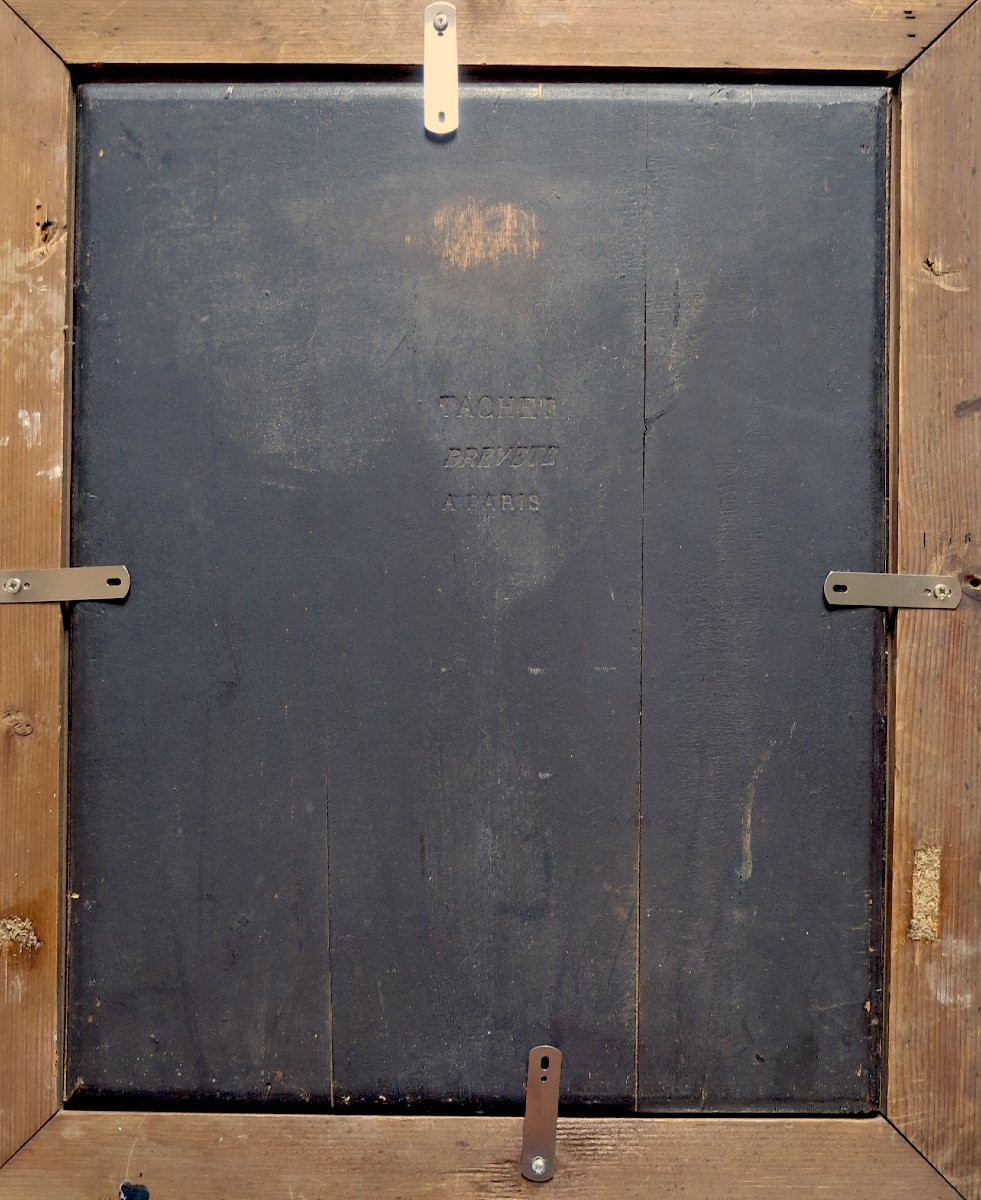







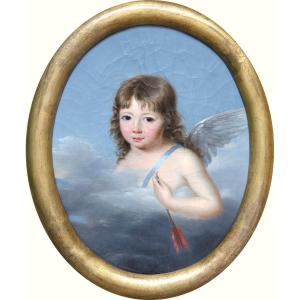





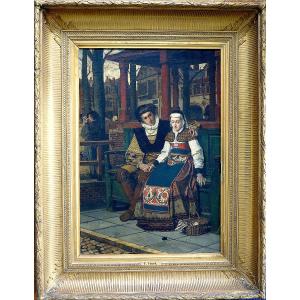

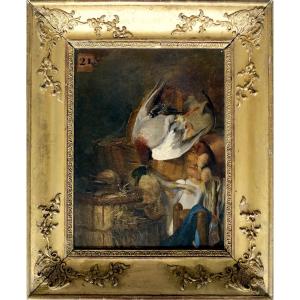






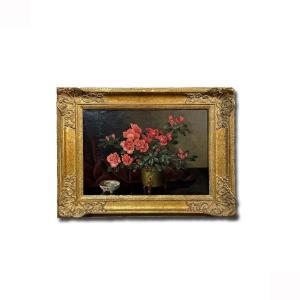
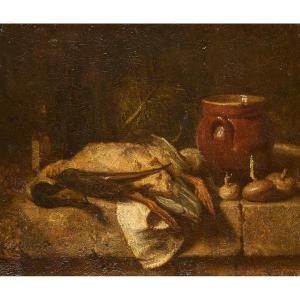

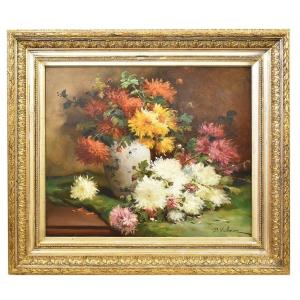



 Le Magazine de PROANTIC
Le Magazine de PROANTIC TRÉSORS Magazine
TRÉSORS Magazine Rivista Artiquariato
Rivista Artiquariato